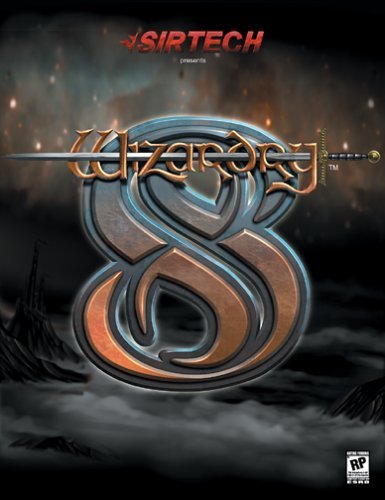Wizardry 8 Preview
-
Category: PreviewsHits: 6992

Article Index
Page 1 of 3
It's the old theme that history repeats itself. Once, long ago, was a time when this genre nearly reached a point of being synonymous with computer games themselves. It was a time of prosperity and freedom in the gaming market, the dawn of new genres. Much later, during the role-playing "ice age," only one game a year saved them from extinction. One historian might attribute the fall of the RPG to the disaster that was Ultima VIII (subjectively speaking of course), which unsuccessfully tried to cross action with role-playing.Then, a miraculous recovery with the help of Diablo (which successfully crossed action and role-playing) and somewhat too by Might & Magic VI helped role-playing games to finally, now, become so popular again that gamers' biggest dilemmas are deciding on which their money is going to rest. It was about the time of the revival, 1997, when Wizardry 8 was decided by the powers that be to be developed. This single-player indubitably promising RPG is about to bring us back to a time when stats and flash rode hand and hand together.
The Story - An RPG wouldn't be quite the same without one.
Wizardry 8 takes place during the time of the Ascension. It's a time when the Dark Savant, of Wizardry 7, seeks to become one of the Cosmic Lords himself by securing each of the three cosmic artifacts scattered around the universe. The first two have been found - one by the Dark Savant and another by the race called Mook; each of the artifacts carried a map to the third, which is where you come in. The Mook hired you to sail through space to a distant planet and recover the third artifact. Intercepted by the Dark Savant just as you arrive, he attacks your ship and you crash to the planet's surface. And like in "Cast Away," your party of 6 (increasable by 2 NPC's) awakes to the repetitive sound of gently lapping water; they're on a strange island and know that the Dark Savant is orbiting somewhere around the planet making plans to recover the last artifact, the Destiny Dominus.
Washed Ashore
The press release demo was immersive from the first step. The sounds of the water behind, a sandy beach on a calm sunny day, treasure chest, pack of small crabs, complete freedom of movement and of course a very detailed interface behind the pretty graphics all ready to learn the intricacies of, presented a nearly endless amount of starting options... all pleasurable I might add.
The Interface - It can make or break a game, but not this game.
Stats and flash. how does a game that's been in development for 4 years manage to pull it off with grace? My guess is the extra time that went into finding a publisher (which they are still quiet about) went into the amazing effort of polishing the game to a mirror-like state which includes tweaking the interface as well as the graphics and gameplay (which will be expanded upon later). Nearly every option I'd want or consider is within the easy-to-use interface or one of the option menus.
Among the three main ways to view the interface is the show-everything mode. It has the smaller 3D worldview where each member's head is viewable along the right and left sides, and along the bottom third are the radar mini, party formation mini and text area. At all times in the interface there are thinner bars along all four sides of the screen, and a lot can be accomplished by using just those. The majority of people will probably use this mode for the game's length. But in this game, there are options for everything, so of course another third option is to combine the two extremes by having any of the mini windows up along with the 90% full screen mode.
Each click of the button takes you lightning fast to the correct place with no graphical delay. To illustrate a pair of examples, I'll borrow both good and bad from another game. If you remember the strategy game Heroes of Might & Magic III which had to load an MP3 music file upon entering different areas of the game, quickness of the buttons can be an important issue in any integral-to-gameplay interface design and Wizardry 8 is no turtle.
While the speed of the interface is important, finding the buttons can also be an issue in some games. In Wiz 8, every button is just the right size, Goldilocks style. not too small and just a tad larger than normal, which is perfect for this game. In fact, they are very reminiscent, in a great way, of Heroes III, in that they are on the verge of being cartoonish and highlight slightly when you run your mouse over them. To someone who's played games their whole life, this "little" stuff can amount to a big deal, and when it's done right is immediately noticeable and appreciated. All in all, it's the best user interface for a hardcore RPG I've ever been privileged to play around with. It's just that good.


